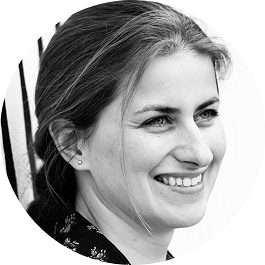
Gray will offer people in Český Krumlov to bring life back to the center
 |
Šedá presented her upcoming project to journalists today. While contemplating it, she realized that the most touristically exploited places seem somewhat similar to so-called excluded locations.
"Houses where no one lives. Stores that no one needs. Streets where people do not meet but avoid each other. This could characterize socially excluded areas, as well as the most beautiful cities in the world listed as UNESCO cultural heritage. The similarity of these seemingly diametrically different places inspired me to create a project that highlights the growth of tourism and the associated problems," she says.
The fictitious company UNES-CO, created by the author, will attempt to reverse this trend. In Krumlov, residents are expected to return to several houses. They will be made available to them as starter apartments and they will receive a salary for living in them regularly. In the pavilion in Venice, a headquarters for the company UNES-CO will be established, where visitors will be able to watch a live broadcast from Krumlov.
"My aim is not just to criticize tourism but to find a way to stop foreigners and give them a chance to become locals for a moment. A face-to-face view - that’s the key to transforming an excluded area into a shared space," added Kateřina Šedá.
The theme of this year's biennale is Freespace, an accessible space expressing the generosity of spirit and the sense of humanity as a central function of architecture. Adam Budak, the commissioner of the Czechoslovak pavilion in Venice and curator of the National Gallery, stated that Šedá approaches the theme subversively, as she shows where free space does not exist. Coincidentally, the project for the biennale was preceded by an initiative from people in Krumlov who live with tourists. "We are all more or less happy with tourists, but in recent years we see a problem. Tourists arrive in such numbers that they hardly see anything and flow through the city from one side to the other," said Hana Jirmusová Lazarowitz from the local Egon Schiele Art Center today.
Last year, residents of some European capitals began to raise awareness about the problem of cities overrun by tourists. The criticism was particularly loud from Barcelona and Venice. Spain, which has about 46 million residents, was visited by 75.3 million tourists in 2016.
The English translation is powered by AI tool. Switch to Czech to view the original text source.
0 comments
add comment
Related articles
0
05.10.2020 | Ideas of Kateřina Šedá help to change the Brno Bronx
0
10.05.2019 | The Brno Bronx is expecting changes for the better according to the proposals of artist Šedá
6
22.09.2018 | The Český Krumlov project of Kateřina Šedá ended in debts
4
01.06.2018 | In Český Krumlov, the project Gray will begin, aiming to bring normal life back to the streets
0
26.04.2018 | Gray will receive 100,000 CZK from the city of Český Krumlov for the UNES-CO project
0
13.04.2018 | Grey in Český Krumlov in the UNES-CO project will accommodate up to 15 families
0
05.12.2017 | The Czech exhibition at the International Architecture Biennale in Venice 2018 will be prepared by Kateřina Šedá
0
21.09.2017 | The Architect of the Year award was received by the artist Kateřina Šedá
0
21.12.2016 | Kateřina Šedá publishes a guide to the Brno Bronx
0
05.03.2014 | Kateřina Šedá: The right side is on the left
2
11.11.2005 | The Jindřich Chalupecký Award was received by Kateřina Šedá












